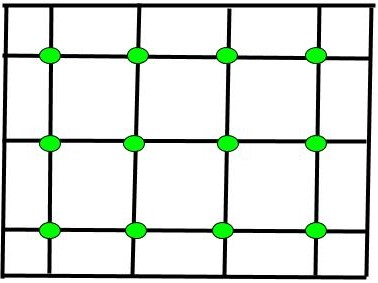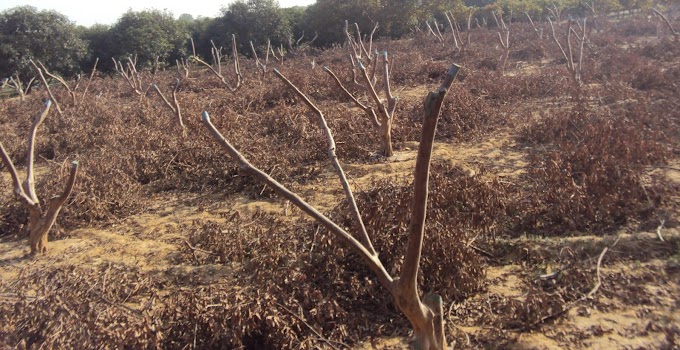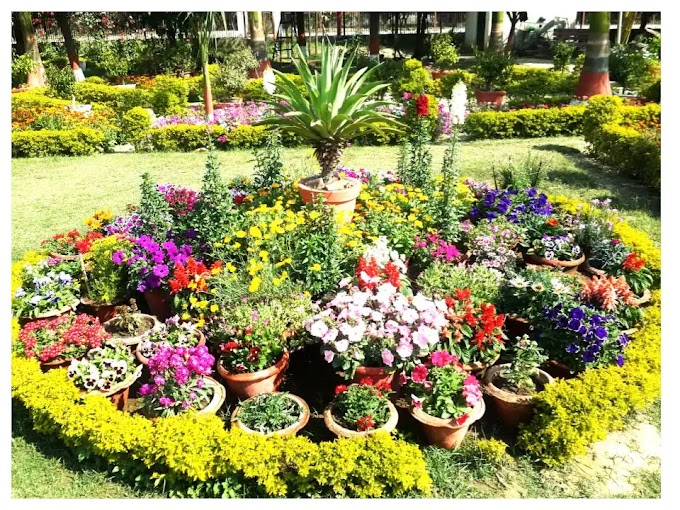Uttar Pradesh is
located in the Northern India between latitude 240 to 310
and longitude 770 to 840 east. The state occupies 9% area
of India in which 16% population of the country resides. The total area of the
U.P. is 240 928 sq km that have been divided into 76 districts 300 tehsils, and
813 community blocks. The total cultivated area of the state is 166.83 lakh ha
and the gross cropped area is 255.24 lakh ha. The cropping intensity in the
state is 153 percent. The agriculture contributes highest 66% to the Gross
State Domestic Product (GSDP). On the basis of rainfall and soil
types Uttar Pradesh has been divided into nine agro-climatic zones (Ghos,
1991).
1.Tarai Zone: The
zone comprises Bijnore, Moradabad, Rampur, Bareilly, Pilibhit, Shahjahanpur,
Lakhimpur, Bahraich, Shravasti and Some parts of the Saharanpur and Muzaffar
Nagar districts. The zone is characterized by alluvial and clayey alluvial soil
which is rich in organic materials. The average annual rainfall in the zone is
1150 mm.
2.Western Plain Zone:
The zone consists of Bijnore, Moradabad, Jyoti-ba-phule Nagar, Rampur,
Bareilly, Badaun and Pilibhit districts. The zone is very fertile region with
sandy & clayey soil and receives 700-1000mm annual rainfall.
3. Central Western Zone:
The Saharanpur, Muzaffar Nagar, Meerut, Baghpat, Ghaziabad, Gautambudh Nagar
and Bulandshahar districts are under this zone. The clayey-alluvial, alluvial,
sandy alluvial and sandy are the main soil types and zone receives 600-965 mm
annual rainfall.
4.South- Western Zone:
This zone comprises Agra, Firozabad, Mainpur, Etawah, Aligarh and Mathura
districts. The soil of the zone is aravalli, sandy, sandy alluvial, alluvial
and clayey type. The saline and sodic soils are also present at some places.
The average rainfall of the zone is 700 mm.
5. Central Plain Zone:
The zone consists of Lucknow, Unnao, Raebareilly, Sitapur, Hardoi, Kanpur
Nagar, Kanpur Dehat, Etawah, Kannauj, Farrukhabad, Auraiya, Allahabad,
Kaushambi, Fatehpur and Shahjahanpur districts of the state. The saline and
sodic soil is the major problem of this zone. The average annual rainfall is
850-900 mm.
6. Bundelkhand Zone:
The Jhansi, Lalitpur, Jalaun, Hamirpur, Mahoba, Chitrakoot and Banda districts
fall under this zone. The soil type is mostly rocky. The average annual
rainfall varies from 800 to 1000 mm.
7.North Eastern Plain Zone:
This zone comprises Gonda, Baharaich, Balrampur, Shravasti, Gorakhpur,
Maharajganj, Khusinagar, Siddarth nagar, Basti, Sant Kabir Nagar and Deoria
districts. The major soil types are sand-alluvial, clayey alluvial and diara.
The zone receives 1000-1200 mm annual precipitation.
8.Easter Plain Zone:
The Barabanki, Faizabad, Ambedkarnagar, Sultanpur, Pratapgarh, Jaunpur,
Azamgarh, Mau, Ballia, Sant Ravidas Nagar, Ghazipur, Banaras and Chandauli
districts are under this zone. The sandy alluvial, clayey and sodic are the
major soils of the zone. The zone receives 1000-1200 mm average rainfall
whereas temperature varies from 420 C to 4.60C.
9.Vindhyachal Zone:
The zone consists of Mirzapur, Sonbhadra and Allahabad districts. The maximum
area of the zone is undulated and rocky whereas soil of plain part of the zone
is light black clay and red alluvial. Average annual rainfall is 1100 mm and
temperature ranges between 490 C and 30 C.









